Introduction
Stir-fried mustard tuber shreds, known in Chinese cuisine as chǎo jiècài gēda sī, is a dish that marries simplicity with profound flavor. Rooted in traditional Chinese cooking, this recipe transforms a humble root vegetable into a crisp, savory, and slightly pungent delight. The mustard tuber, or Brassica juncea, is a robust vegetable celebrated for its earthy taste and versatility. When sliced into thin shreds and stir-fried with aromatic ingredients, it becomes a textural masterpiece—crispy on the edges yet tender within. This article delves into the nuances of preparing this dish, from selecting the freshest ingredients to mastering the stovetop technique that ensures perfect caramelization. Whether you are a seasoned home cook or a curious novice, this guide will equip you with the knowledge to create a dish that honors tradition while inviting creativity.
The Humble Mustard Tuber: A Culinary Chameleon
The mustard tuber, often overlooked in Western markets, is a staple in Asian kitchens. Its knobby appearance and peppery aroma belie its culinary potential. Rich in fiber, vitamins C and K, and antioxidants, it offers both nutritional and gustatory rewards. When prepared correctly, its natural bitterness mellows into a pleasing sharpness, making it an ideal companion to richer ingredients like pork or tofu. Selecting a firm, unblemished tuber is the first step toward success. Avoid specimens with soft spots or excessive root hairs, as these indicate age or improper storage.
Ingredients: Balancing Flavor and Texture
To achieve harmony in your stir-fry, assemble the following ingredients with precision:
- 500g fresh mustard tuber: Look for tubers with vibrant green leaves attached, a sign of freshness.
- 50g pork belly or bacon (optional): Adds umami depth; substitute with mushrooms for a vegetarian version.
- 3 cloves garlic, minced: Provides aromatic punch.
- 1-inch ginger, julienned: Introduces a subtle warmth.
- 2-3 dried red chilies (adjust to taste): For a gentle heat; remove seeds for milder flavor.
- 2 tbsp cooking oil: Use peanut or vegetable oil for high-heat cooking.
- 1 tbsp soy sauce: Enhances savory notes.
- 1 tsp dark soy sauce: For color and caramelization.
- 1 tsp sugar: Balances bitterness.
- 1 tsp rice vinegar: Brightens the dish.
- 1 tbsp Shaoxing wine (optional): Elevates complexity.
- Salt and white pepper: To season.
- 1 tbsp cornstarch (optional): For thickening, if desired.
Preparation: The Foundation of Excellence
-
Cleaning and Peeling:
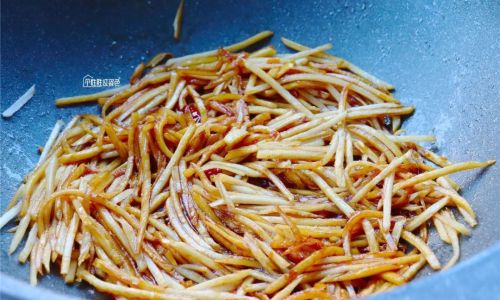
- Rinse the mustard tuber under cold water, scrubbing gently to remove dirt.
- Trim the root end and any wilted leaves.
- Using a vegetable peeler, remove the tough outer skin. Focus on areas with visible ridges, as the inner flesh is tender.
-
Shredding Technique:
- Slice the tuber into 3mm-thick rounds. Stack the rounds and cut into matchsticks (julienne). Uniformity ensures even cooking.
- Place the shreds in a bowl of cold water to prevent browning and leach excess bitterness. Soak for 10 minutes, then drain and pat dry.
-
Mise en Place:
- Mince garlic and julienne ginger. Slice pork belly into thin strips.
- Combine soy sauces, sugar, vinegar, and Shaoxing wine in a small bowl.
The Stir-Fry Process: Mastering the Wok
Stir-frying is a dance of heat and timing. Follow these steps for wok hei—the elusive smoky flavor—without burning your ingredients.
-
Heat the Wok:
Place your wok over high heat until wisps of smoke rise. Add oil and swirl to coat.
-
Render Fat (if using pork):
Add pork belly and stir-fry until golden and crisp. The rendered fat will flavor the dish.
-
Aromatics:
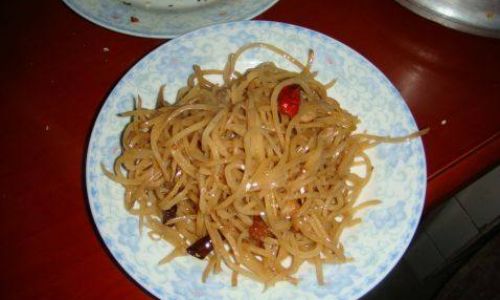
Toss in garlic, ginger, and chilies. Stir-fry for 30 seconds until fragrant but not browned.
-
Vegetable Addition:
Drain the mustard tuber shreds thoroughly. Add to the wok and toss vigorously.
-
Seasoning:
Pour the prepared sauce mixture over the vegetables. Stir-fry for 2-3 minutes, allowing the liquid to reduce and glaze the shreds.
-
Final Touches:
Sprinkle white pepper and adjust salt if needed. For a glossy finish, drizzle with a cornstarch slurry (mixed with 1 tbsp water) and stir until thickened.
Achieving the Perfect Texture: Crisp-Tender Mastery
The key to exceptional stir-fried mustard tuber shreds lies in balancing crispness and tenderness. Overcooking renders the vegetable mushy, while undercooking leaves it fibrous. Follow these tips:

- High Heat, Quick Cooking: Maintain fierce heat to sear the shreds rapidly, preserving their structure.
- Even Distribution: Use a wok spatula to lift and toss ingredients continuously, ensuring each shred is coated in oil and seasoning.
- Taste Test: Sample a shred after 2 minutes. It should yield slightly to pressure but retain a snappy texture.
Variations and Customizations
Adapt this recipe to suit your palate or dietary needs:
- Spicy Lover’s Edition: Double the dried chilies and add a pinch of Sichuan peppercorns for a numbing heat.
- Vegetarian Delight: Omit pork and use mushrooms (shitake or oyster) for umami. Marinate them in soy sauce before cooking.
- Vegan Twist: Substitute honey for sugar and use a splash of lime juice instead of Shaoxing wine.
- Garlic Enthusiast: Increase garlic to 5 cloves and add a handful of chopped cilantro at the end.
Serving Suggestions: Pairing with Purpose
Stir-fried mustard tuber shreds shine when paired with complementary dishes:
- Rice Combos: Serve over steamed jasmine rice or mix with congee for a hearty breakfast.
- Noodle Pairings: Toss with chow mein noodles or thin rice vermicelli for a one-bowl meal.
- Protein Partners: Pair with grilled tofu, pan-fried fish, or roasted duck for a balanced plate.
- Appetizer Adaptation: Reduce portion sizes and serve with lettuce cups for a crunchy bite.
Health Benefits: Nutrition Meets Nourishment
Beyond its delicious taste, this dish offers a wealth of health benefits:
- Digestive Aid: The mustard tuber’s fiber content promotes gut health and regularity.
- Antioxidant Powerhouse: Compounds like glucosinolates combat oxidative stress.
- Low-Calorie, High-Satiety: A generous serving contains under 100 calories, making it ideal for weight management.
- Vitamin Boost: Rich in vitamin C, it supports immune function and skin health.
Storing Leftovers: Preserving Freshness
Leftover stir-fry can be refrigerated for up to 3 days. To reheat:
- Wok Reheat: Add a splash of oil and stir-fry over high heat until warmed through.
- Oven Method: Spread on a baking sheet and reheat at 350°F (175°C) for 5-7 minutes.
- Avoid Microwaving: This method softens the texture, diminishing crispness.
Common Pitfalls and How to Avoid Them
Even seasoned cooks may stumble. Here’s how to troubleshoot:
- Soggy Shreds: Overcrowding the wok traps steam. Cook in batches if necessary.
- Bland Flavor: Ensure adequate seasoning and balance with acid (vinegar) and sweetness (sugar).
- Burnt Aromatics: Add garlic and ginger after the pork has rendered its fat to prevent scorching.
- Excessive Bitterness: Soak the shreds longer or blanch briefly in boiling water before stir-frying.
Cultural Significance: A Dish of Resilience
In Chinese folklore, the mustard tuber symbolizes perseverance. Its ability to thrive in harsh soils mirrors the resilience of communities that cultivated it during lean times. Today, it remains a beloved home-cooked dish, evoking nostalgia for simpler meals shared around the table.
Conclusion: Elevating the Everyday
Stir-fried mustard tuber shreds is more than a recipe—it’s a testament to the alchemy of humble ingredients elevated by skill and care. By mastering the techniques outlined here, you unlock a dish that delights the senses, nourishes the body, and connects us to centuries of culinary heritage. Whether served as a side or a main, its crisp texture and vibrant flavor will leave a lasting impression. So, heat your wok, sharpen your knife, and embark on a journey to transform the ordinary into the extraordinary. After all, in the world of stir-fries, perfection lies not in complexity, but in the pursuit of balance—a harmony of heat, seasoning, and time.
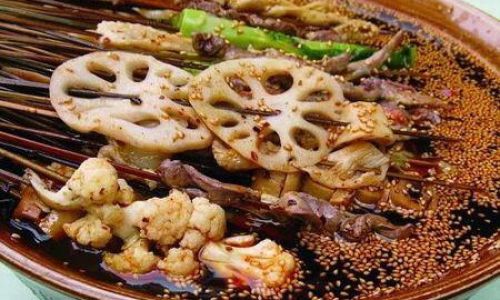
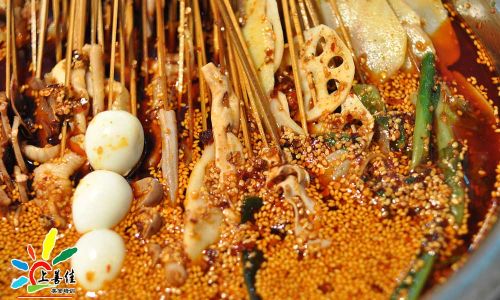


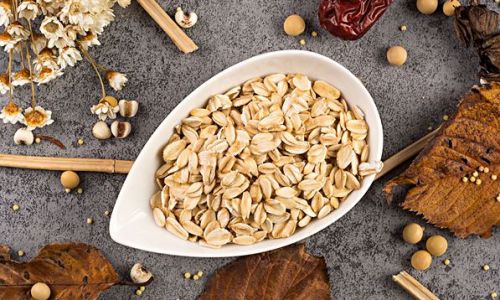

0 comments